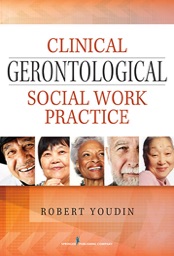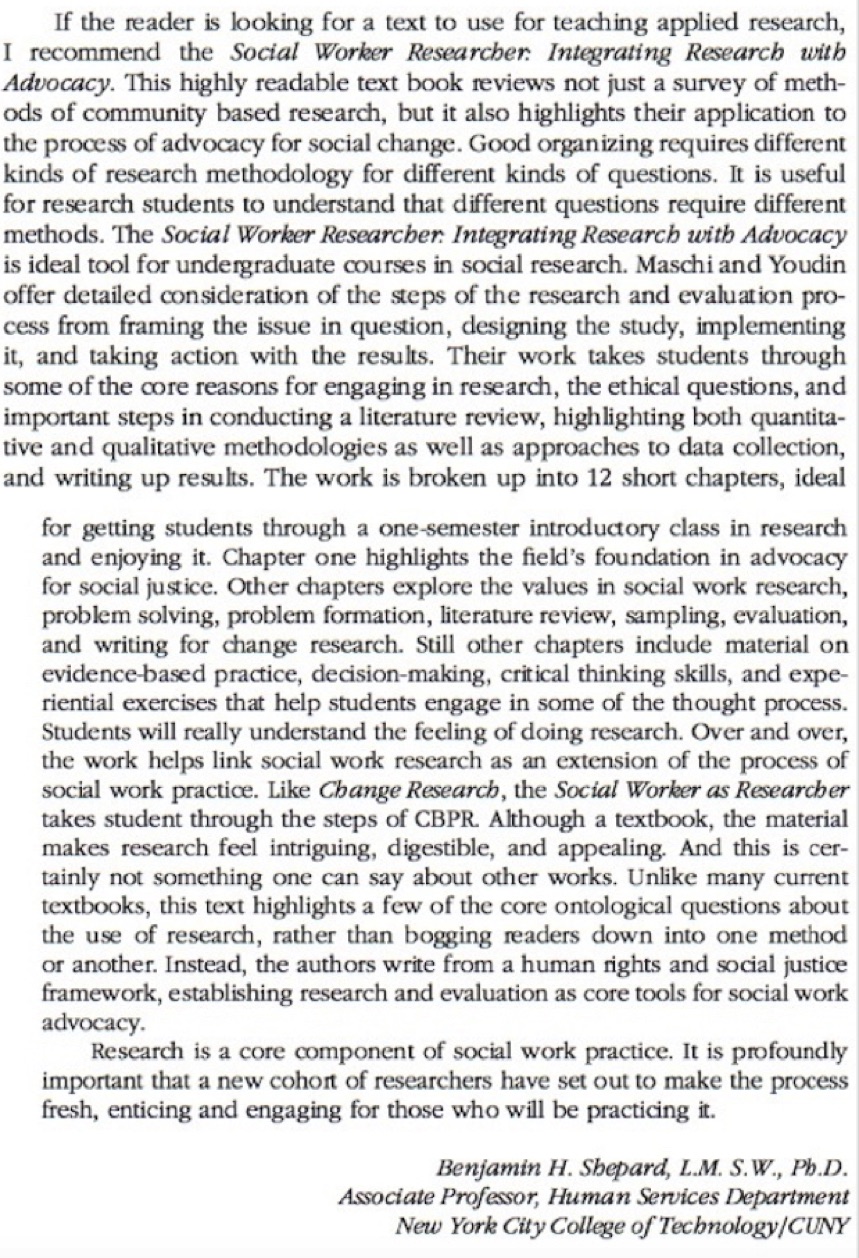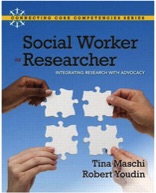Robert Youdin's book Old and High is a ground-breaking guide to understanding Baby Boomers' use, misuse, and abuse of psychotropic drugs. The book is broken into three distinct parts.
Part I addresses who Baby Boomers are, as well as the unique characteristics of this generation relatedto documented substance use and abuse. The medical model and the Person-in-Environment (PIE)perspective are discussed side by side to highlight the differences in the two theoretical models and he
impact the two frameworks have had, and continue to have, on how society views addiction. Basic genetic and psychophysiological concepts are explained in an easy-to-understand manner. In addition, the impact and intersection of racism, classism, and the criminalization of psychotropic substances are discussed poignantly.
Part II discusses the psychotropic substances most used and abused by Baby Boomers (alcohol,benzodiazepines, cannabis, opioids, psychostimulants, and nicotine (tobacco) and presents research related to each.
Part III presents therapeutic interventions and techniques for treating substance-using older adults (i.e., Boomers). Case scenarios are used throughout to illustrate points, techniques, and issues.
In my opinion, Youdin's book is really a seminal guide for any social work practitioner and/or social work student's bookshelf. With the significant growth and diversity of the aging population, along with the economy's negative impact (physically and mentally) on seniors' human rights, dignity, and quality of life, I suspect that social workers in any field of practice will run into substance abuse issues among older adults (most of whom will be Baby Boomers). From access to affordable housing, and healthcare, to loneliness, poverty, and the emotional/physical strain of grandparents raising grand children, numerous stress-related variables can lead to self-medication among this marginalized group. Consequently, having access to a guide that not only acknowledges the diversity and unique characteristics of Boomers, but discusses past and present research on the phenomenon, as well as evidence-based practices and interventions that are illustrated in relevant case scenarios, is really invaluable. In addition, Youdin does a fantastic job of presenting extensive, detailed research in a way that directly ties it to clinical practice.What I found particularly impressive was the way in which the author took into consideration looking at this phenomenon from a social justice perspective. Youdin may not be a social worker, but he
addresses the impact of diversity on this phenomenon and acknowledges how policy intersects with social variables in regard to diagnosis and treatment, and what that means for the consumer. Although I wish the book included more discussion on dimensions of diversity (sexual orientation,
gender identity, cultural differences are addressed, but not thoroughly enough for me), I highly recommend this book to any social worker or social work student because of its relevance, guided interventions, and overall discussion of addiction and Baby Boomers from a PIE perspective. As a macro
social worker, I found myself more prepared to advocate for this population after reading this book. This text coupled with a book specific to LGBTQ seniors would be a powerful asset to social workers.
Reviewed by Satara Armstrong-Charlson, PhD, MSW, Professor of Social Work, Brandman University, Irvine, California.
"Focusing on a hitherto much neglected cohort, this meticulously researched volume--richly illustrated with case examples--is a unique contribution to the field of substance abuse literature. Dr. Robert Youdin sheds light upon the 'hidden epidemic' of psychotropic misuse amongst the baby-boom
generation. Generously referencing the physiology and neuroscience of substance habits, he pays welcome attention to the psycho-social-historical roots of the problem and suggests a humane, evidence-based, harm-reduction approach to its treatment and resolution."
Gabor Mate, MD, Author, In the Realm of Hungry Ghosts: Close Encounters with Addiction; Adjunct Professor, Faculty of Criminology, Simon Fraser University

“This book is about social work practice with older adults—the 'silver tsunami' as we baby-boomers retire. The first part includes chapters on ways of categorising older adults and their problems, assessing them, methods of interventions, and an interesting chapter on stigma and older adults. Part II is about the problems encountered in gerontological social work practice and includes chapters on psychopathology, dementia, medical problems, substance abuse, sexuality, older adult abuse, LGBT, and dying and death. The material appeared well set out and the discussion seemed focused on the real world and was augmented by case studies. It appeared adequately referenced with a 43-page bibliography.
This book provides a good introduction to gerontological care for students of social work, for whom it was written, but should also be of interest to social workers who work in palliative care, where an increasing proportion of their patients will be older adults. And given the role-overlapping that exists in palliative care, I thought it would be of interest to nurses and doctors who are interested in the problems older people face, viewed from a slightly different angle (i.e. social work), and how they can be managed.”
Footprint Books
“This book has a forward-thinking orientation that reflects the reality of aging with older adults throughout the aging life course... Dr. Youdin integrates an advanced clinical social work practice with in-depth knowledge of evidence-based practice as well as geriatric medicine, psychiatry and gerontology."
The Lamp
"This book aims to integrate advanced clinical social work practice with in-depth knowledge of evidence-based practice as well as geriatric medicine, psychiatry and gerontology. The author advocates truly engaging with the older client in a variety of settings including nursing homes, assisted care facilities and hospitals, and discusses mental health issues associated with such settings. Major psychopathological problems common to older adults are addressed, along with Alzheimer's disease and dementia, medical and co-occurring psychological problems, sexuality and the unique vulnerabilities of LGBTI clients. Its fresh, interdisciplinary approach will provide a useful supplement to the nursing literature on aged care. Clinical Gerontological Social Work Practice makes a valuable read for professionals who work with older or elderly individuals. Through a program that emphasizes a combination of theory, technique, advocacy, and more, it's able to redefine how social workers interact with older adults."
NSW Nurses and Midwives' Association



Written by a renowned scholar and practitioner of gerontology and aging, this is a concise, reader-friendly overview of key concepts of geropsychology, the psychology of aging. Grounded in positive psychology, the text dispels common myths about the aging population with a wealth of evidence-based research. Itencompasses a foundational knowledge base regarding issues unique to older adults, information that is essential for mental health providers, who alreadysee an unprecedented growth in the number of older adults in their practices,Äîa trend that is expected to continue for years to come.
The text discusses theoretical models underlying geropsychology and examines common difficulties that affect older adults along with the most effectivetreatment approaches for this population. With a focus on the strengths and functions of older adults, the text examines the unique psychological problemsof later life and conflicts caused by retirement, living longer, financial stressors, and chronic illness. It discusses the complications of changingfamily systems, coping with cognitive impairments, how psychologists understand and treat Alzheimer,Äôs and dementia patients, older adult sexuality and theunique sexual problems confronting LGBT individuals, elder abuse, ageism, substance abuse, and issues surrounding death and dying. A chapter on futuredirections for psychological research and practice highlights the many opportunities available in this field. The text will be of value for upper-levelundergraduate courses on the psychology of aging, as a supplement to developmental and clinical psychology courses, and as a resource for interdisciplinarystudies with a focus on gerontology.
Key Features
• Provides a concise overview of one of the largest growing segments of our population
• Written by a prominent expert in gerontology and psychology
• Offers a wealth of evidence-based research that informs clinical issues
• Grounded in a positive psychology approach
• Integrates theory with human rights and social justice
"Clinical gerontological social work practice is an advancedtext for students and clinicians in social work and relatedfields who work with United States-based older clients. It combines social work theories, practice techniques, and medical content into a pragmatic framework that provides pathways for the professional to reach the client. A perspective the author uses throughout the book is the difference between the Person-In-Environment theory of Powell Lawton (p. 12) and the medical model of treatment. The person-in-environment approach gives
the clinician a broad range of techniques with which to engage the client and, together, work toward the client’sgoals. It enables the author to present the client as an individual struggling with various stressors as opposed to the medical perspective that presents the client as having some type of illness. The client isn’t seen as a person who is sick, broken, or incomplete and in need of healing by the practitioner. Rather, the client is seen as an aging individual who needs to understand his/her changinginternal capabilities and external impacts in order to reestablish his/her own well-being. This approach also enables the author to address human rights of diverse subgroups, for example: minorities, LGBT (Lesbian, Gay, Bisexual, and Transgender), and prison inmates. Also addressed is the role professionals need to play in advocating for these constituencies.
The book is divided into two parts: theory and application. Each chapter closes with a case study that presents issues in a clinical setting. The first part,
Chapters 1–4, provides an overview of relevant theories, assessments, and treatment techniques. Chapter 1introduces theories of aging and ways the practitioner can organize them into a supportive system. Chapter 2 focuses on assessing the client and provides a detailed framework with which to gather the client’s information. The author advocates for the social worker to perform the complete assessment, rather than an intake professional. Since the assessment may be the initial contact the client has with the helping organization, having the social worker gather the client’s information
may establish a therapeutic bond more quickly. Chapter 3 returns to theory but focuses on intervention and treatment. The key aspect of these theories is the client’s recognition of his/her own strengths and ability to make good choices. Chapter 4 reviews the impact of stigma on older adults. It discusses the individual’s sense of identity, on loved ones, and how social systems may play a role.
The second part of the book talks about specific problems in social work with older clients; it includes Chapters 5–13. Chapter 5 discusses the medical model and handling psychopathological problems of older adults. The author stresses the importance of understanding the choice between the medical model and the person-in environment theory because of their significant differences in treatment. Chapter 6 introduces various dementias, including Alzheimer’s Disease, useful medications, and other interventions. It also addresses key quality of life issues: driving and falling. Last, it
discusses the impact of dementia on the prison population and the limited options for rehabilitation and/or maintenance. Chapter 7 provides an overview of the major types of medical problems older adults experience. This information is important for the social worker because of the coexisting conditions a client may have and the different ways in which a client may present. Substance abuse is not restricted to the young. In chapter 8, the author quotes “Levin and Kruger (2000),who assert that substance use other than alcohol is an invisible epidemic” (p. 128). Understanding this situation is key for the social worker because this abuse can be misdiagnosed, and it is also underreported.Chapter 9 educates the reader on older adult sexuality. This is an especially important topic because of the general perception that older adults are asexual, which is not true. The younger population, especially those in helping professions, need to recognize sexuality across the whole lifespan and treat it accordingly. Chapter 10 changes focus from the individual to the broader area of adultabuse. The definition of abuse has evolved from being a caregiver issue to one that includes caretaking institutions and even self-abuse. The social worker has the opportunity to be a pivotal support for the client in this area. Because of the empathetic relationship, the social worker may be the only person in whom the clientcan confide. As the client’s advocate, the social worker needs to understand and exercise the social and/or legalsystem in his/her best interest.
Chapter 11 reviews issues faced by “Gay Male, Lesbian,Bisexual, and Transgender Older Adults” (pp. 167–178).These issues exist across a broad spectrum from individual challenges like anatomical irregularity to social structures like stigmatization and discrimination. While the author calls for more research to understand these minorities, he simultaneously advocates for the evolution of social policy and government/legal/institution support. Chapter 12 provides an overview of housing options and their associated types of care. These range from adult day care service centers to skilled nursing facilities, nursing homes. With adult day care, elders live at home and go to the center to receive some services—for example, a meal—and enjoy the company of others. At the other end of the spectrum, the nursing home, the individual gives up his/her home, moves into the nursing home, and receives almost all of his/her care there. Social workers need an in-depth understanding of local housing stock in order to enable their clients and families to make the right choice of residence.
Chapter 13 is a natural ending for a gerontology book: death and dying. The social worker can make an important contribution to the quality of a client’s life by helping prepare for death. From the basics of end-of-life paperwork to the complicated integration of activity into life’s meaning, the social worker is challenged to understand the client’s concerns about end of life. When she/he does, she/he can be an invaluable guide and confidant through the process.
The organization of the content and its presentation are very clear, making the complex concepts accessible.Clinical Gerontological Social Work Practice educates the reader on many of the biopsychosocial stressors faced bydiverse subgroups. And it reinforces the reality that all older people are NOT the same. I recommend this book to readers who want to explore an environmental impact approach to therapy and/or add this approach to their clinical skill set."
Reviewed by Alice C .Kenn
Circuit Breaking presents a paradigm shift from traditional forensic and medical treatments for psychoactive substance abuse. This new paradigm teaches therapists and students that a three-stage neurocircuitry of psychoactive substance abuse is the etiological cause of psychoactive substance abuse. Therapists learn how to teach people in treatment to change neurocircuitry within their brains enabling a sustained and successful recovery.
This neuroscience-informed, non-disease-oriented treatment approach, inspired by evidence-based research, indicates that positive neuroplastic changes within one’s brain and cognitive change within one’s mind creates an opportunity for people to cease abusing psychoactive substances.
An example of improper and moralistic treatment for impoverished people and people of color occurs when jail or prison becomes their treatment. For middle and upper-class people, mental health practitioners ascribing to the medical model view them as having a disease that causes their abuse of psychoactive substances. These people are propagandized that they have a lifelong chronic illness needing episodic stays in rehab facilities, intensive outpatient treatment programs, detox facilities, and/or attendance in 12-step programs.
Circuit Breaking provides a step-by-step guide on how to track daily frequencies of wanting (craving) to reveal activity of an underlying three-stage neurocircuitry of psychoactive substance abuse. By combining cognitive-behavioral interventions, mindfulness-based interventions, brief motivational interviewing techniques, and harm reduction interventions a therapist enables people to learn how to achieve a recovery process that culminates in being recovered. This occurs by extinguishing the underly neurocircuitry driving abuse of psychoactive substances.
Using this integrative approach, therapists select techniques and interventions based on individual needs rather than a generic psychotherapeutic approach applied equally to all people being treated.
Case vignettes throughout Circuit Breaking show the various ways different people experience neuroscience-informed psychotherapy and harm reduction interventions.
“
Dr. Youdin's presentation of the historical and sociological systems that impact substance abusing clients in the United States is a standout feature of this thought-provoking book. His understanding of intersectionality and the impact of marginalization, combined with the way he connects theory to cases provides practical and helpful insights for anyone working with (or wanting to work with) substance abusing clients.”—Satara Charlson, PhD, MSW, Professor, Social Work, UMASS Global
“This publication is written by an expert, and it approaches the topic of how and why failing understandings of people's abuse need to be changed. This book is a strong and consistent appeal with respect to a paradigm shift.”—Niels Rosendal Jensen, Associate Professor, Aarhus University, Faculty of Arts, Danish School of Education

